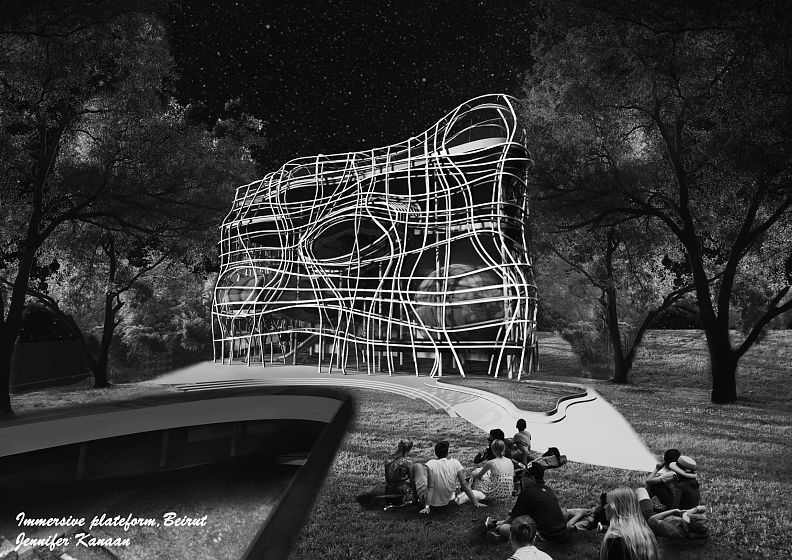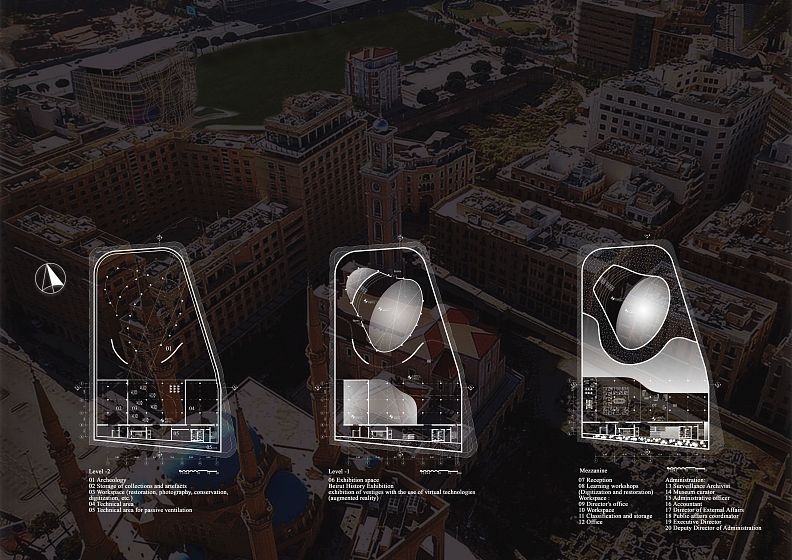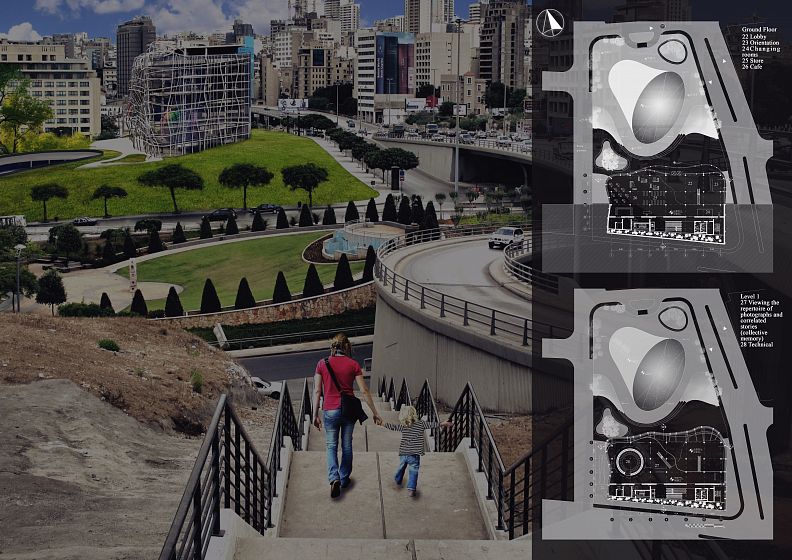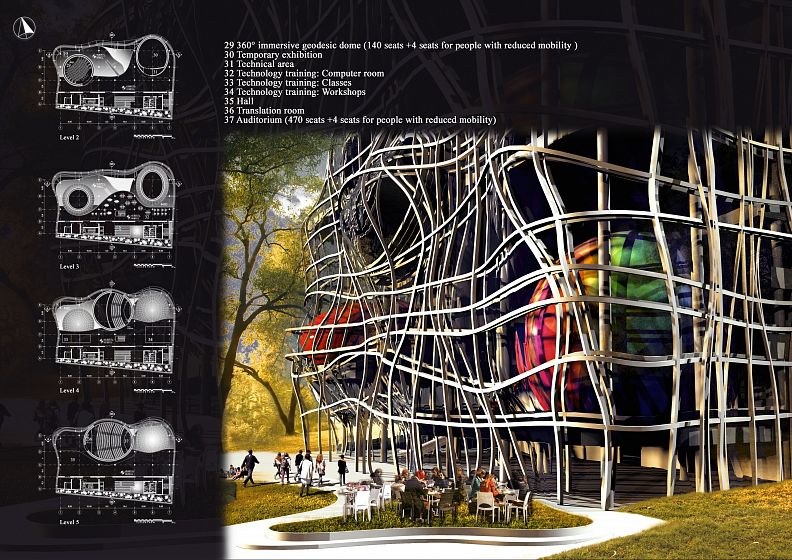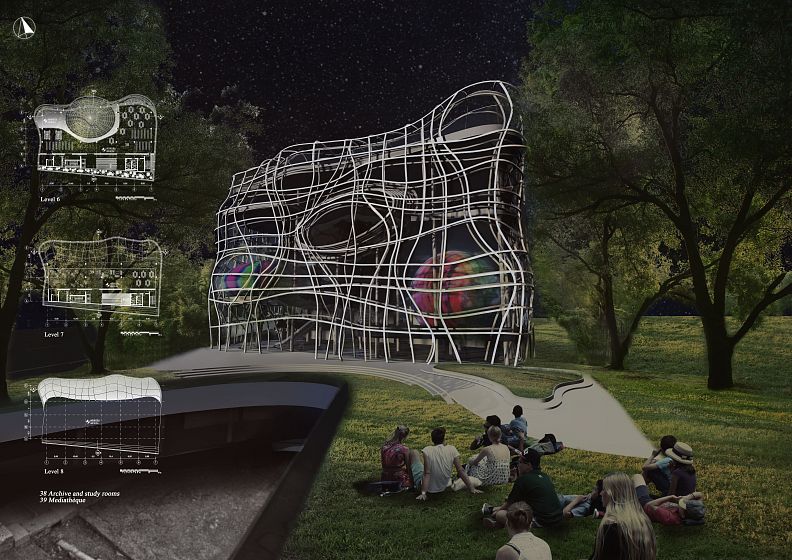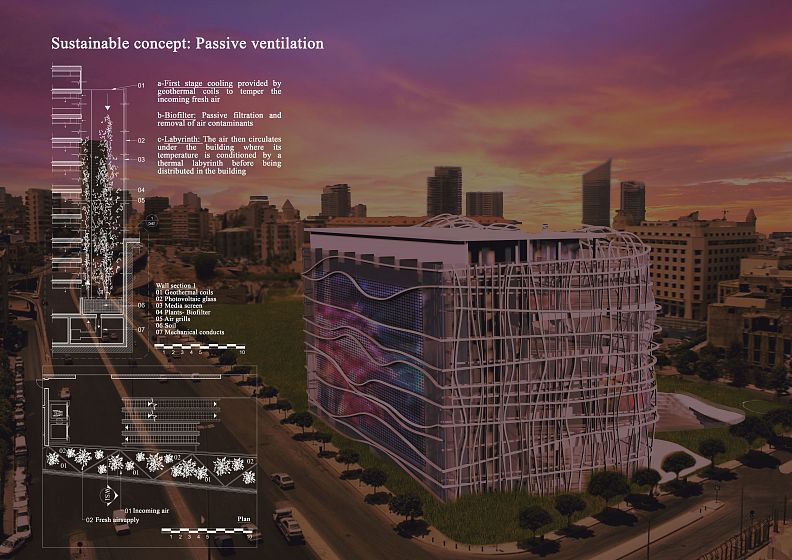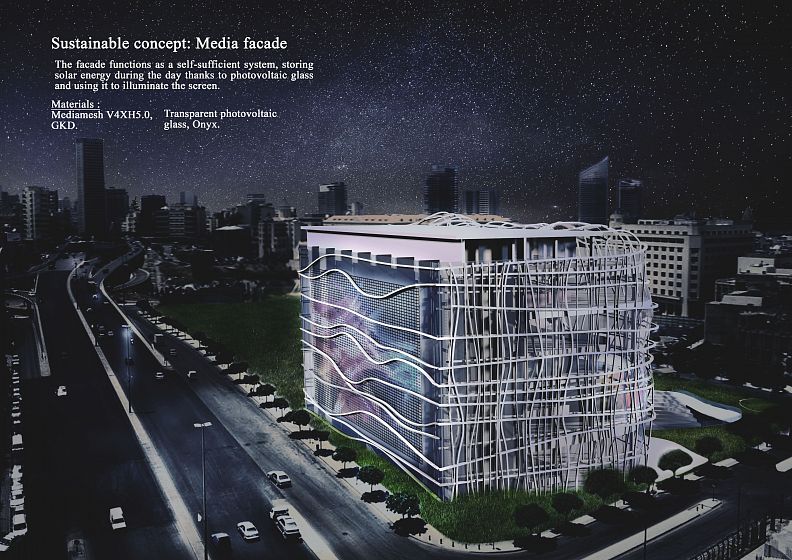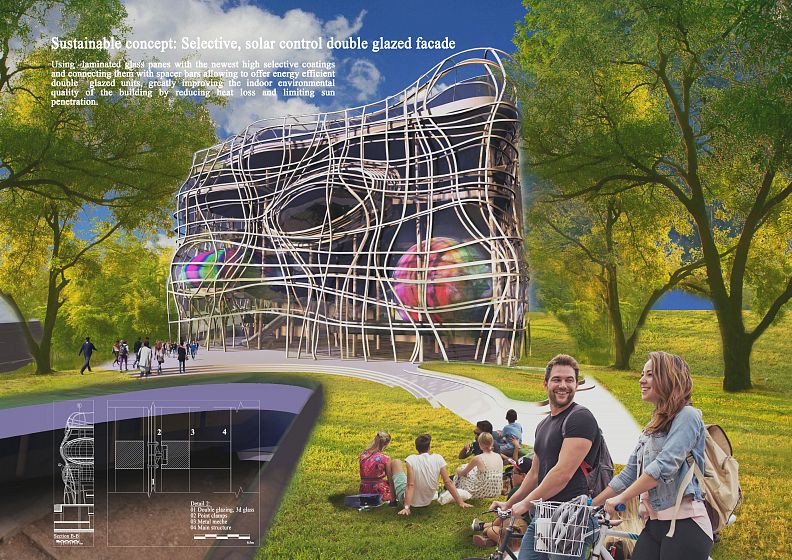Immersive Plateform, Beirut

Project idea
Described as an urban phoenix, Beirut has had an infinite capacity for reinvention and transformation. This is most observed in its city center which has known several civilizations dating back over 5000 years.
Although it has a rich archaeological treasure, only a limited number of preserved archaeological places are accessible to the public in Beirut. What better way to study the history of past civilizations than to experience it virtually? Indeed, "Virtual Heritage" allows us to use new technologies to improve our understanding of our history.
Thus, the need arises for an immersive platform using virtual technologies to make us understand the entire historical, cultural and heritage background of downtown Beirut.
For this, the proposed urban strategy is to implement an electronic application allowing the route outside the project to be extended to the city using augmented reality so that visitors can view the virtual representation of a site at different times. The chosen site, the starting point of this route, includes a fragment of the extension of the main Roman road Cardo Maximus to the extra muros road of the Bachoura site, according to the hypothesis established by the researchers.
Project description
The project aims to be a landmark, a cultural installation that would nourish new environments, behaviors and creations. Accessibility, openness, transparency and sustainability are key values in the conceptual approach.
The plateau, reserved for permanent exhibitions, unfolds under a green space, which will serve as the social core. An archaeological excavation on the site which is an integral part of the program, is left intact and is made visible.
This immersive platform seeks a unique expressiveness by the synthesis of interior and exterior spaces at different levels in order to form a labyrinth of virtual and multi-sensory experiences. It's about drawing a movement rather than a finished shape. The architectural design, the approaches and the reactions of the participants thus form the soul of the project.
Hence, this new center celebrating the history and culture of Beirut suggests both tangible and intangible artefacts; architecture and archeology; history and modernity.
This platform includes: an archive space for the history of Beirut, permanent and temporary exhibition spaces and technology training facilities.
In level -2, the artefacts can be digitized and gathered in an archive. From basement 1 this process is presented to visitors. Basement 1 is dedicated to permanent collections. Thanks to virtual technologies, the visitor is not an observer, but interacts with the artefacts and builds the knowledge himself.
The first floor is dedicated to viewing collections of images and correlated stories, in order to preserve the collective memory.Level 2 is dedicated to exhibitions on Beirut and or temporary. By offering a new broadcasting environment, the fulldome offers an alternative to traditional immersive systems. These forms, benefiting from a great modularity allow the creation of original shows to engage the public.
Training facilities are offered at levels 3 and 4 since the use of augmented reality is required in different fields today. These workshops are the necessary spaces for meeting digital artists, researchers, and programmers.
Levels 5 and 6 house the archive room and the media library. With a large reading room and workspaces, it welcomes students and researchers and provides them with the collection of the archive created for Beirut.
Technical information
The project incorporates various sustainable features, such as natural ventilation, photovoltaic glass and a building envelope that has a high energy performance.
